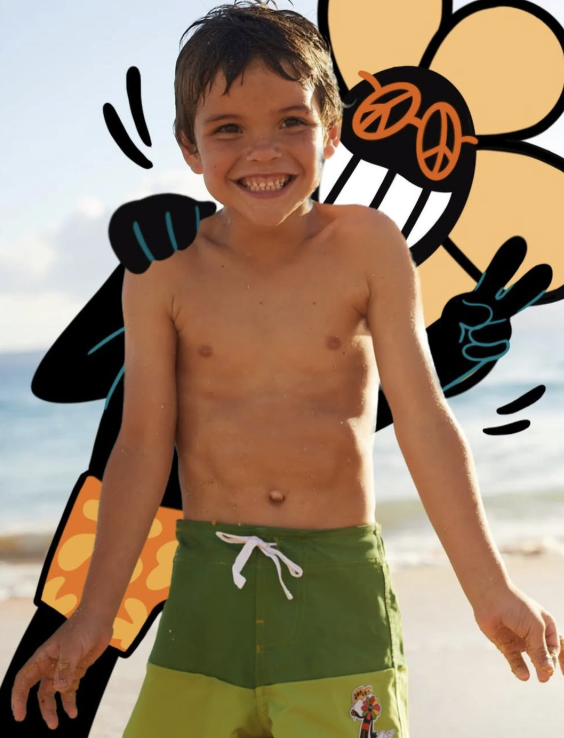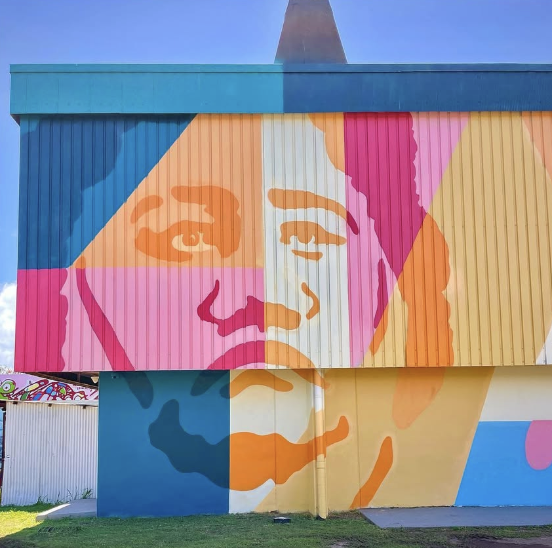Being a Generational Changer | with Jack Soren
When people see Jack Soren’s name on murals across the world—collaborations with brands like Vans, the vibrant surf figures that line Oʻahu’s streets—it’s easy to assume he’s always had it figured out. But for Jack, the hardest work hasn’t been painting walls, but something else internal.
Jack Soren comes from a long line of artists. His father is a skilled Hawaiian jeweler whose engraved heirloom pieces are still cherished by families across Hawaiʻi. His mother and grandmother were painters, seamstresses, and poets. From those roots, Jack launched himself into a creative career that now spans murals for global brands and shows in galleries and street-art festivals internationally.
“I was born in a really awesome, awesome family unit,” Jack says. “And they’re still so supportive today.”
But even with that foundation, talking about emotions wasn’t part of the household vocabulary.
“Growing up, it was always kind of shame to talk about mental stuff,” he remembers. “Like, oh, you always mental, you know? But no, I think it’s very important to talk about and to pay attention to.”
Learning the real work
After graduating from BYU–Hawai‘i with a degree in graphic design, Jack decided to burn the ships. No backup plan, no 9-to-5.
“I told myself when I was about to graduate that I wasn’t gonna get a job. I was just going to go straight into art and make it work.”
That commitment paid off. His art now travels the globe, from galleries to festivals to walls that once stood gray and lifeless. But amid the success, he started noticing another kind of challenge.
The creative life came with a pressure to keep producing and a constant sense of comparison. He found himself wrestling with self-doubt, anxiety, and the need to “measure up” to other artists.
“The way I think is different. It got to a point where I realized that a lot of what was going on in my mind was slowing me down. So I started to look into being more self-aware and understanding myself a little bit better.”
For Jack, this meant therapy, reflection, and unlearning old ideas about what it means to be a man, something shaped deeply by the environment he grew up in.
At Kahuku High, a powerhouse for football and a place where toughness defined respect, emotions weren’t something you showed. “I was partly trying to survive 'cause I was smaller,” he recalls. “I'm a smaller Polynesian and we got 14 year olds that tower over me and play football and pancake kids like me on the football field.” The culture was physical, competitive, and built on grit.
“Even being a kāne, you know, a man, it’s something that we have expectations of. And a lot of times I think it’s a lot different than we think. I want to be vulnerable, and expressive, and communicate my feelings ’cause I don’t think we do that enough as men.”
Becoming a generational changer
One moment in particular changed his perspective.
Someone had told him on his church mission, “You are a generation changer.” At first, he didn’t understand what that meant. Over time, it became a personal mantra.
He realized it meant choosing a new path that breaks away from the patterns that had shaped generations before him.
“Generational trauma is a real thing. I’ve seen it in my dad, in my uncles, in my family. So now what I’m trying to do is be open about these things. To be expressive and say, we don’t have to do this anymore.”
For Jack, breaking that cycle starts with openness. He sees it as his kuleana to be a force for change for the next generation. Rather than hiding his struggles, he speaks about them honestly, sharing that he goes to therapy, lives with ADD, and experiences impulsive tendencies that once made him restless.
Instead of seeing these as flaws, he now views them as traits that fuel his creativity and drive. Art has become his outlet, the place where he channels his energy, emotions, and curiosity into something tangible and healing. Through his process, he transforms what once felt chaotic into something deeply purposeful.
“I was my own worst enemy for the longest time until I figured out how to love myself and to really care for myself.”
This is what being a generation changer looks like in real life: Choosing honesty over hiding. Healing instead of passing pain down. Building a future where his kids and grandkids won’t inherit silence.
Art is healing
Jack’s bold, colorful style mirrors this inner work. His vivid waves, figures, and dream-bright skies bring color and life to blank walls.
“When things are near the end of their life, they start to lose color,” he says. “When we show up to a wall that’s gray, maybe painted over a few times, we give that wall a new life by adding color to it.”
To Jack, color is a symbol of healing.
Through his art, he’s reclaiming space for stories, emotions, and conversations that were once taboo.
“Taking care of my mind and my heart is so much more important than being quiet about it,” he says. “Our people, they keep it quiet. They suffer in silence. And then it turns into something we don’t expect. So it’s my kuleana to be that force for the next generation.”
What we can steal
Jack Soren’s story reminds us that strength doesn’t mean silence; it means self-awareness, honesty, and courage to start new conversations.
Take care of your mind. Mental health isn’t a weakness; it’s part of your foundation.
Break the silence. Talk about what’s hard. The more we normalize those conversations, the more healing we create.
Be a generation changer. You have the power to rewrite what strength, manhood, or success looks like in your family.
Use your outlet. Art, writing, sports. Whatever helps you process emotion, keep doing it.
Pass on healing, not hurt. The work you do on yourself today shapes the next generation tomorrow.














